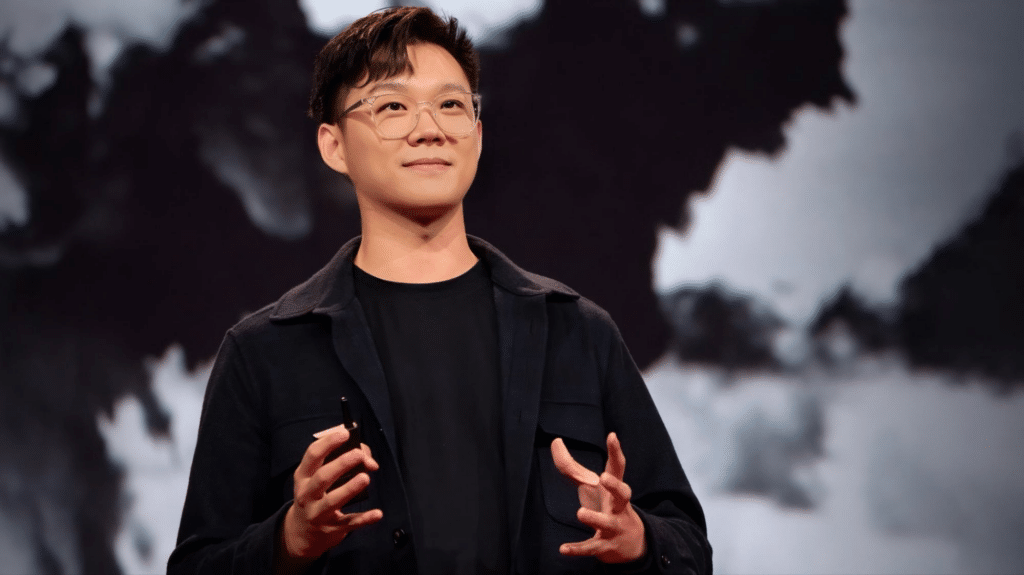By: SEO Mavens
From the bustling tech hubs of Silicon Valley to the rapidly evolving digital landscapes of China, Tiancheng Xu has navigated the global tech industry with a pioneer’s spirit and a visionary’s eye. Starting his first tech company at 14, Xu quickly recognized the transformative potential of digital marketing, launching Zankeapp.com to capitalize on the burgeoning social media trends of the early 2010s.
Joining Microsoft Azure’s Machine Learning and later Interactive Streaming team, Xu led critical projects during the COVID-19 pandemic, enhancing Microsoft Teams’ capabilities to meet the demands of a world shifting abruptly to remote work. Now, as the founder of SpeakUp AI, Xu is at the forefront of the generative A, aiming to democratize content creation and reshape how we engage with digital media.In this interview, he discusses his formative years, Microsoft, and the inception of SpeakUp AI.

George Lucas: You started your first company at just 14. Can you walk us through what that experience was like for a middle schooler? What were the major challenges you faced diving into tech entrepreneurship at such a young age?
Tiancheng Xu: Starting Zankeapp.com was a rollercoaster, George. It was the end of summer in my middle school year when I noticed Instagram was taking off globally, including China. At the time, I wanted to be a photographer. I took many photos but lacked viewers. I wondered if there was a way to get more views for my pictures. The idea came to me from the #likeforlike #followforfollow movements on Instagram. I did a quick experiment – liking other photographers’ pictures, and many reciprocated. Out of 50 people I liked, a staggering 32 followed back. I started to think about scaling this into a service. Quickly setting up a Taobao Shop, I secured a contract for $1,000 for the first month, and soon after, $5,000, then $15,000—it just kept growing. After building automated websites, it became much more scalable, turning into a $300,000 ARR startup. What I didn’t expect when I started was that the majority of our clients would be businesses and merchants who saw the platform as a unique advertising space. I was tapping into a bigger theme of social media marketing and global e-commerce. Factories, brands, and agencies wanted to leverage social media to make an online presence and reach customers worldwide. The biggest challenge was credibility. Here I was, a teenager, pitching to seasoned business owners about leveraging social media advertising. It was tough to be taken seriously at first. But our results were five times better at only a fraction of the cost. As they tried out, that quickly convinced them.
GL: That was an incredible story. Jumping ahead, you eventually joined a major tech company, Microsoft, right?
TX: Yes, it was a unique opportunity at the time. I was sought after by both the China and US sides of Microsoft. I ended up staying at the US headquarters and was fortunate to lead several key projects that were vital not only to our team but to Microsoft. You know, as a product manager, I’m the face of the product, a mini-CEO if you will. My duty is to organize and lead company resources—engineering, marketing, legal—to launch a product. I was specifically working on Teams and Multimedia Redirection, both of which became essential as COVID-19 unfolded. Major clients like the UK National Health, hospitals, and Fortune 500 companies including Marriott, Boeing, EY, Accenture, and Johnson & Johnson relied on our product for seamless call experiences on the Windows cloud.
GL: Could you elaborate about the product, and why was it so pivotal during COVID-19?
TX: Absolutely, as quarantine started in COVID, companies shifted to remote work. Traditional sectors, financially constrained, won’t send out new hardware, while they realized Windows cloud is much more flexible, scalable and cheaper. My product allowed Microsoft Teams and other call center apps to operate on the cloud version of Windows while still maintaining clear call quality. You know, previously, poor call quality made remote meetings nearly impossible. We rebuilt it to the point where it’s now as good as a local call. This product saved companies millions of dollars on cellular plans for one of our clients. It enabled productive remote work during a critical time and I’m proud to have made a difference during this historic period.
GL: That’s fantastic. Now, with SpeakUp AI, you’re focusing on AI, and you’re a big believer in generative AI. What makes this technology a game-changer for you?
TX: We are all going through a paradigm shift in the content economy because of Generative AI. It’s analogous to what the steam engine did for physical labor, massively amplifying what one person can do. You know, 20 years ago, Facebook invented social media because people wanted to browse content by their friends. 10 years ago, TikTok brought in a recommendation algorithm, making it less about who created the content and more about whether the content aligns with the viewer’s interests. I see a future where generative AI becomes the content creator, producing tailored content automatically, knowing your interests. This is the new paradigm of content creation and consumption I’m looking forward to.
GL: With SpeakUp AI, you aim to democratize content creation. What goals do you have, and what broader impacts do you hope to achieve with your innovations?
TX: Our initial goal with SpeakUp is to empower existing creators and help aspiring ones to begin their creative journeys. At SpeakUp AI, we want to lower the barriers to creative expression. We envision a world where anyone with a story, whether they’re in New York or Nairobi, can share their voice. This not only empowers individuals but also enriches our global digital culture. We’re focused on creating a more inclusive and diverse media landscape where more voices can be heard. It’s a vision that resonates with people and investors, especially now in the midst of the largest creator economy to date.
This transcript has been edited for brevity and clarity.
Published by: Martin De Juan



















